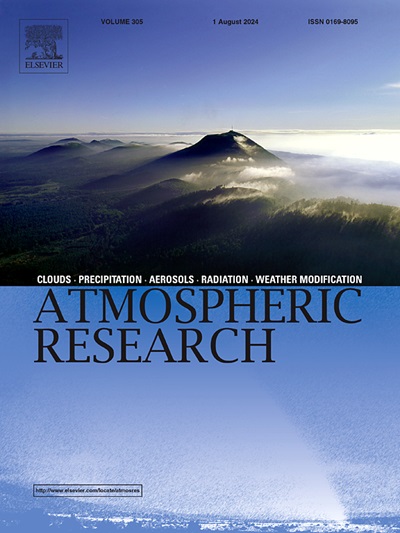通过与 CMIP6 十年期预测相结合改进陆地蓄水的长期预测
IF 4.5
2区 地球科学
Q1 METEOROLOGY & ATMOSPHERIC SCIENCES
引用次数: 0
摘要
准确的气候预测对陆地蓄水(TWS)十年期预测至关重要,有助于水文基础设施的可持续发展。尽管来自大气、海洋和陆地表面的初始记忆是气候可预测性的重要来源,但它们对十年水文预测的影响仍然未知。在此,通过弹性框架将第六次耦合模式相互比较项目(CMIP6)中不同初始化策略的气候预测纳入全球主要流域的水文预测中。与没有任何气候预测信息的参考预报相比,整合气候初始化和外部作用力可将 69% 流域的 TWS 预测技能(纳什-萨特克利夫效率)提高 0.14-0.24% ,尤其是在高纬度地区的长前导时间内。具体而言,气候初始化可提高 62.5% 流域的 TWS 预测技能,而考虑大西洋或太平洋海面温度信息则有利于 38%-90% 流域在不同提前期的水文预测。我们的研究结果表明,如果能够适当利用源于初始条件、外部作用力和特定气候变异性的高水平气候预测,就可以实现可靠的十年期水文预测。本文章由计算机程序翻译,如有差异,请以英文原文为准。
Improving long-term prediction of terrestrial water storage through integration with CMIP6 decadal prediction
Accurate climate prediction is crucial for terrestrial water storage (TWS) decadal prediction, which contributes to the sustainable development of hydrological infrastructure. Although the initial memories from atmosphere, ocean and land surface are important sources of climate predictability, their impacts on the decadal hydrological prediction still remain unknown. Here, climate predictions with different initialization strategies from the sixth Coupled Model Intercomparison Project (CMIP6) are incorporated into the hydrological predictions over global major river basins through the elasticity framework. Integrations of the climate initialization and external forcings can improve the TWS prediction skill (Nash-Sutcliffe efficiency) by 0.14–0.24 over 69 % basins against a reference forecast without any climate prediction information, especially over high-latitudes at long lead time. Specifically, climate initialization results in a higher skill for TWS prediction over 62.5 % of basins, while considering the Atlantic or Pacific sea surface temperature information is benefit to the hydrological prediction over 38 %–90 % of basins at different lead times. Our findings imply that reliable hydrological decadal prediction can be achieved if skillful climate prediction that originates from initial conditions, external forcings and specific climate variability has been utilized appropriately.
求助全文
通过发布文献求助,成功后即可免费获取论文全文。
去求助
来源期刊

Atmospheric Research
地学-气象与大气科学
CiteScore
9.40
自引率
10.90%
发文量
460
审稿时长
47 days
期刊介绍:
The journal publishes scientific papers (research papers, review articles, letters and notes) dealing with the part of the atmosphere where meteorological events occur. Attention is given to all processes extending from the earth surface to the tropopause, but special emphasis continues to be devoted to the physics of clouds, mesoscale meteorology and air pollution, i.e. atmospheric aerosols; microphysical processes; cloud dynamics and thermodynamics; numerical simulation, climatology, climate change and weather modification.
 求助内容:
求助内容: 应助结果提醒方式:
应助结果提醒方式:


